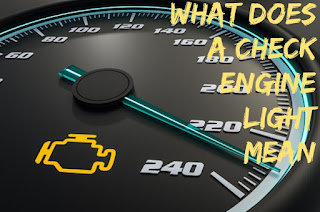On a speedometer of a contemporary car, the check engine light is illuminated.
The first indication that something is wrong with your car is a check engine light. Unfortunately, it could be anything as minor as a loose gas cap or as serious as an engine that is misfiring. Find out more about this warning system and what it means to you if a light is on. Discover out how to find the appropriate repairs for this problem rather than continuing to drive and endangering your vehicle.
Your engine’s onboard computer
The engine computer unit, or ECU, is the main part of your car’s electronic system. The ECU connects with each sensor in your car. Other sensors are used to make crucial adjustments that affect your fuel efficiency, horsepower, and other performance features. Some of these sensors are part of a warning system.
Your dashboard lights will flash as a warning when your ECU alerts you to a problem in your car. Since the check engine light is the most frequent light, it is illuminated for a variety of problems. Fortunately, the system also keeps a diagnostic issue code that an OBD-II scanner may read to provide more precise information.
How to Respond to Illumination
The most crucial thing for a driver to do is to remain calm. Unless your car is emitting smoke or you’re noticing other dangerous symptoms, you usually don’t need to turn off the engine right away. Instead, when it’s safe to do so, bring your car to an auto parts store and ask them to examine the issue code. You can check it yourself if you have an OBD-II scanner at home.
A more specific problem, such as a lean air/fuel mixture, a malfunctioning mass air flow sensor, or a broken O2 sensor, should be indicated by this code. From there, you can either arrange for a repair or order the component for a do-it-yourself auto repair. Understanding the source of the error code can help you and a mechanic save time by searching in the right area for any possible engine or sensor issue.
By focusing your search for any potential engine or sensor issue where the error code originated, you and a mechanic can save time.
How to Respond to Flashing
Typically, a flashing check engine light indicates an emergency. Your check engine light is no exception to the rule that flashing lights are never a good thing. This often indicates that your catalytic converter is fully blocked, your engine is misfiring, or there is some other major problem.
As soon as it’s safe to do so, pull over and come to a stop. Driving with a blinking light on might result in expensive car damage or a sudden engine failure. Avoid losing control and getting into an accident, but locate a safe place to stop your engine before it suffers further damage from misfiring or other problems.
Read Also: Why You Should Use a Steering Wheel Lock in Your Vehicle
Conclusion
Caring for your car means taking care of the mechanical and electrical systems that keep it running. Regular maintenance can help prevent expensive repairs down the road.
Maintaining your car’s mechanical systems can include regular oil changes, fluid changes, and inspections. Inspecting your car’s mechanical systems for damage can help you avoid costly repairs.
Regularly checking your car’s electrical systems can help you prevent costly repairs. Checking for frayed wires, melted switches, and blown fuses can help prevent serious problems.












+ There are no comments
Add yours